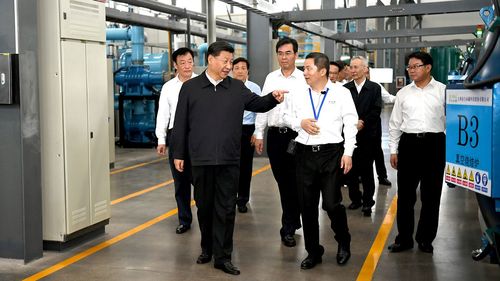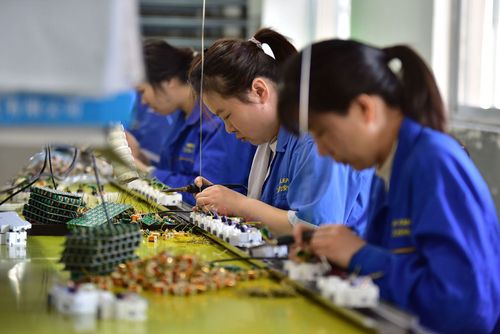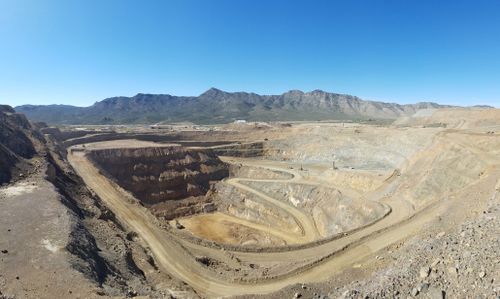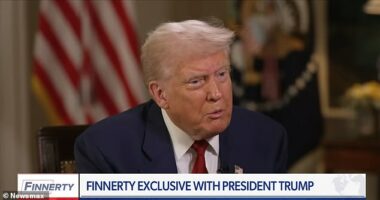Touring its exhibition hall in 2019, Xi examined row upon row of unremarkable grey metal blocks and declared to his entourage of Communist Party officials: “Rare earths are a vital strategic resource.”

And unlike tariffs, it’s a front where Trump has little room to retaliate in kind.
Rare earths are a group of 17 elements that are more abundant than gold and can be found in many countries, including the United States. But they’re difficult, costly and environmentally polluting to extract and process.
On April 4, after years of veiled warnings, the Chinese government placed export restrictions on seven types of rare earth minerals, as part of its retaliation against Trump’s initial 34 per cent “reciprocal” tariffs on Chinese goods.
The new rules require all companies to secure government permission to export the seven minerals as well as associated products, such as magnets.

“It’s China showing that it can exert incredible economic might by being strategic … and surgical and really hitting American industry right where it hurts,” said Justin Wolfers, a professor of economics and public policy at the University of Michigan.
Since the first Trump administration, the US has been trying to play catch-up and build up its own domestic rare earths supply chain.
Three American rare earth industry companies told CNN that they are in the process of expanding production capacities and sourcing materials from US allies and partners.
But those efforts will take years to meet the enormous demand from key US industries.

For now, the impact of Beijing’s export controls is being swiftly felt on the ground.
John Ormerod, founder of rare earth magnet consultancy JOC, told CNN that shipments of rare earth magnets belonging to at least five American and European companies have been halted in China since the imposition of the order.
“They were taken by surprise so there’s a lot of confusion on their side and they needed clarification from the authorities of what’s required (to obtain the required export licenses),” he said.
Joshua Ballard, CEO of USA Rare Earth, said the export controls focus on “heavy” rare earths, which are 98 per cent controlled by China. (Heavy rare earths are less common, harder to process and more valuable.) This means that companies must now seek Beijing’s approval to deliver these critical materials to key American industries, he added.

“Right now, literally these exports are being suspended,” Ballard said.
“We don’t hold a lot of back stock of this in inventory here in the US … This is China’s best play. They don’t have much leverage when it comes to tariffs on us, but they sure do have leverage here.”
The export controls not only target single materials but also alloys and products where the elements are contained even in minimal quantities, said Thomas Kruemmer, director of the Singapore-based mineral and metal supply chain firm Ginger International Trade and Investment.
“A lot of exports now fall under this licensing system,” he added, noting that some delays are expected as exporters navigate the new system.

Panic on Wall Street as Trump announces new tariffs
During that time, China combined its low labour costs and relatively lax environmental standards with the adoption of foreign technologies, according to Stan Trout, founder of the rare earths and magnetic materials consultancy Spontaneous Materials.
“Much of the technology that they brought in was developed here in the US, or in Japan, or in Europe,” he said.
“And over time, I’m sure they’ve made improvements to it.”
As the country’s rare earth production increased, Beijing gradually understood the strategic importance of the minerals.
“There was a recognition that this could be a very important technology for them to master,” Trout added.
Today, China has fulfilled Deng’s vision by dominating the entire supply chain for the materials.
While labour costs are now higher, China’s control of the industry has been cemented because of its “willingness to invest in the technology, the R&D, and automation” in an industry that is highly capital-intensive, said Ormerod.
There were once American companies making these rare earth magnets. But Ormerod noted that they gradually exited the business as lower-cost Chinese alternatives emerged.
“We’ve lost the know-how, we’ve lost the human resource capability and it’s a very capital-intensive operation,” he said.
Now, it is difficult to compete with the “Chinese price” because of the country’s greater economies of scale, as well as government incentives that gave them an additional edge, Ormerod added.
Challenge and opportunity for the US
The latest export controls are not the first time Beijing has leveraged its dominance in the industry. In 2010, China halted shipments of rare earths to Japan for nearly two months over a territorial dispute. In late 2023, Beijing imposed a ban on rare earth extraction and separation technologies.
Beijing has also curbed exports of other critical minerals, a broader category of mineral resources that are also vital to the economy and global supply chains.
Experts and industry insiders said China’s export controls have left the rest of the world with very limited alternatives. But the US is working to fill the gap.
Some American companies see China’s export controls as an opportunity to expedite domestic production and push for a stronger supply chain outside China.

Nicholas Myers, CEO of Phoenix Tailings, a Massachusetts-based rare earth processing start-up, said his company has developed technology to refine rare earth minerals with “zero waste, zero emissions” into metals and metal alloys, sourcing the materials from domestic ores as well as Canada and Australia.
His company currently produces 40 tonnes of rare earth metals and alloys per year and aims to scale up to 4000 tonnes with a new facility in New Hampshire.
“It’s all domestic processing. We don’t rely on anything from China,” he said.
“The United States absolutely has the capabilities to be able to produce the rare earth metals at the timelines that we really need it. We just have to make sure that all the customers, all the policymakers are focused on supporting the industry to really scale up.”
American businesses are making inroads in parts of the supply chain too.
USA Rare Earth is building a magnet plant in Texas, aiming to produce 5,000 tonnes of rare earth magnets annually; it also owns a deposit rich in heavy rare earths in West Texas, including all the minerals on China’s latest export control list, according to its CEO Ballard. (The deposit is also rich in gallium, a critical material banned by China for export to the US in December.)
But the company is still working on the processing technology to extract minerals from the rocks, Ballard said.
“The question is how do we do this faster? How do we unlock these assets that we have in the US, as few as they are? We need to unlock what we have and build as quickly as we can,” he said.
After years of talk, American companies may finally have the impetus they need to do the difficult work of re-establishing the industry for extracting and processing raw materials that is key to winning a tech race with China.






